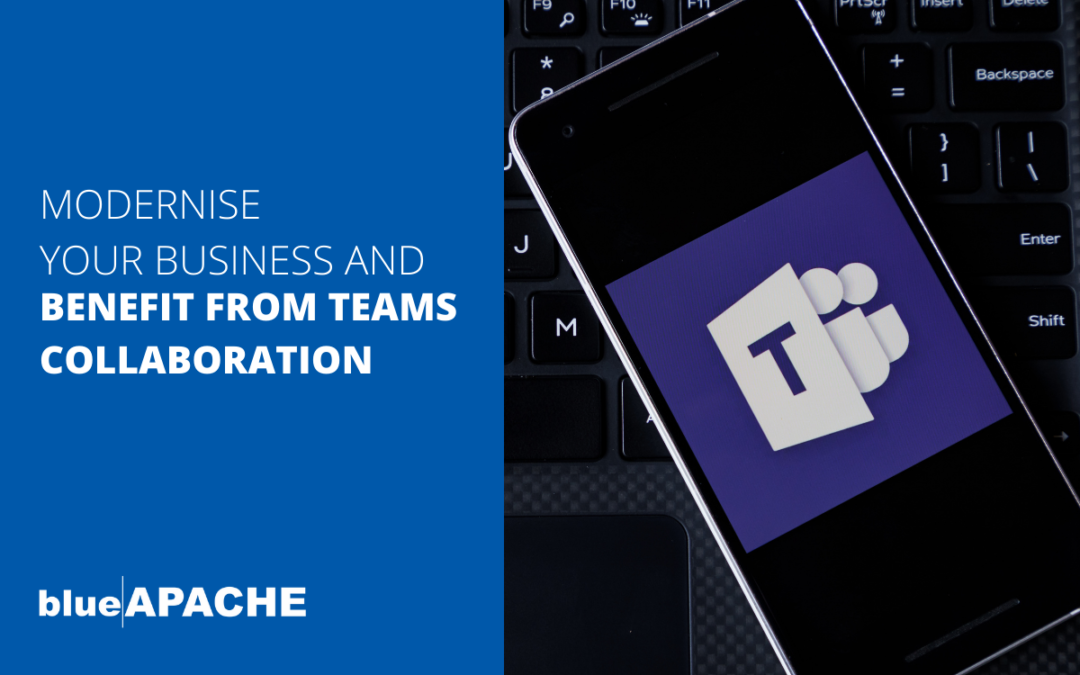Today, we’ll be looking at how to achieve a unified collaboration platform and how your business can benefit from having one.
Modern Workplaces thrive on collaboration, and a unified collaboration platform is an essential tool to achieve that. But, how can you achieve that and what are the benefits that this will unlock? This blog is designed to answer those questions, and provide your business with a blueprint to access the benefits for your organisation.
The evolution of business telephony
Gone are the days when your entire business telephony system was a single landline into the main office. Not only was this model ineffective due to the amount of missed calls and time customers would have to spend waiting for staff members to be tracked down, but it was also highly restrictive in terms of call volume and the level of customer service that you can provide.
The addition of Interactive Voice Responses (IVRs) in the late ’70s laid the foundation for the complex systems we use today, but it wasn’t until the ’90s that VoIP systems arrived on the scene. From here, we’ve seen Skype (Team’s great grandfather) launch in 2003, the addition of modern-day smartphones in 2007 and the cloud-based service take-off in 2011.
All of these advances have led us to the point where the humble desk phone is no longer so humble and can now function as a hub for communications business-wide. As long as you have the right set-up, of course.
For now, however, let’s explore the evolution of business telephone systems:
Operator-based systems – physical human-based switching
Hailing back to a simpler time, operator-based systems require actual human input to get communications where they need to go. A receptionist or member of the call centre team will receive the call and manually send it off to where it needs to be via a switchboard at their location.
PBX – automated on-premise switching
Much like the above system, PBX receives and distributes calls, with the main difference being that under this system, the process is handled via automation rather than having a human manually control inputs. In this instance, costly, dedicated equipment and software must be kept and maintained on-site.
Cloud telephony – PBX in the cloud
Currently, the most advanced option for managing inbound calls in the traditional sense is cloud telephony. This system is very similar to the above mentioned PBX on-site automation system. However, it can be accessed from anywhere. This means that your automated system will be able to receive the call, establish who it needs to go through to, and get it sent to the appropriate receiver, no matter where they are, or what type of phone they’re using.
Collaboration – integration with Teams
It’s when we move across to collaborative calling, however, that we see the largest advances in technology.
With Teams now being a widely used platform, it has become the go-to for intra- and inter-company collaboration. This is because it allows multiple members to join a Teams call with the push of a button and is easily accessible from any device. This ability is thanks to the fact that it happily allows dialing in from both smart devices and standard calling systems (as long as all parties have a network connection and the relevant numbers to call or link to join).
Introducing Teams Direct Routing – integrating Teams with phone systems
As we touched on above, Teams is far more than an online conferencing platform. Its ability to connect standard phone lines with online participants makes it the logical way forward for businesses wishing to unify their communications and streamline processes.
While creating full direct routing integration isn’t as simple as just having call members dial in, the process can make a massive difference to productivity and is well worth pursuing.
Essentially, the use of direct routing connects your Teams ecosystem to that of a Cloud PBX. This allows you to make and receive calls between devices entirely through Teams, without having to use URLs or codes as you’ll be assigned your own number within the ecosystem. This allows you to replace your current PBX set-up and creates a fully unified communications network.
Benefits of Teams Direct Routing
Teams Direct Routing offers a whole host of benefits for your business, including some that you may not have even considered:
• Improves collaboration and makes working together seamless
• Increases flexibility within your communications system
• Provides cost benefits through the replacement of costly to maintain physical PBX systemsm, and can actually work out to be more economic than previous set-ups as you’re using a single system
• Supports WFH and remote work setups as employees are no longer limited by physical connections
• Increases system uptime, therefore improving customer service and team communication
Teams Direct Routing from blueAPACHE
Teams Direct Routing from blueAPACHE offers carrier-grade backhaul from Optus/Vocus. The service has a streamlined onboarding time frame with a proof of concept delivered within 1 day, and we offer flexible tariffs ranging from per-minute charges to all-inclusive plans.
We can also provide a wide range of add-ons including contact centre functionality, compliance services and call recording.
This is all backed by a local 24/7 support team comprised of certified experts and a robust network with almost 100% uptime.
To find out more, please contact us directly at:
1800 248 749
https://www.blueapache.com/contact/

